This was my personal experience with ice baths over the course of about 30 days or more. This is not a scientific study, but this is what happened to me. Later, I’ll show you how to start having ice baths yourself.
So firstly, I should explain that I usually have cold showers.
In fact, almost every shower I’ve had for the last few years has either been freezing cold the whole time or freezing cold at the end. Sometimes I’ll do contrast showers and end the cold water cycle.
I’m probably wondering why I’d do such a crazy and uncomfortable thing, right?

I’ll get to that…
But I just want you to know that I’m used to cold water, so my experiences might be different than those of someone who’s never even had a cold shower in their life.
This is important for later, and I actually wouldn’t suggest starting with cold baths if you’ve never experienced a cold before.
My cold shower habit
So like I said, I’ve been having cold showers for a long time. As long as I can remember in fact. I read an article a few years ago explaining the benefits, and the benefits of cold showers make a lot of sense:
- Improved blood flow
- Improved circulation and vascular strength
- Improved mood and energy (which force your body to release endorphins and make you feel happy)
- Forces deep breathing and large, deep, and slow breathes (All of us usually don’t breathe deeply enough)
- Can help you recover faster from injury or exercise (exercise IS injury in a small way)
- Boosts your testosterone
- I found it gives more motivation and willpower (doing something that’s uncomfortable at first, forces your willpower to strengthen)
So there are lots of reasons I’ve been having cold showers over the years. You can read more about that here or watch my video about cold showers below:
What about ice cold baths?
So now we’re talking about cold baths.
I say ice baths because eventually, you’ll have to use ice to get the bath cold enough.
You very quickly adapt to the cold temperature and need it to be colder and colder. After the first 20 days, I was having to use an entire freezer just for ice.
So ice baths are very different from cold showers because an ice bath drastically lowers your core body temperature.
Showers can do the same if you stay in them long enough, but the effect is very different. Because a bath immerses your skin and body in the cold, you can’t warm yourself up easily.
This means you get a rapid and deep drop in body core temperature with an ice bath.
It also forces all the blood in your limbs to rush to your internal organs, and this is the part of the ice bath that is healthy and good for your body. The increased blood circulation.
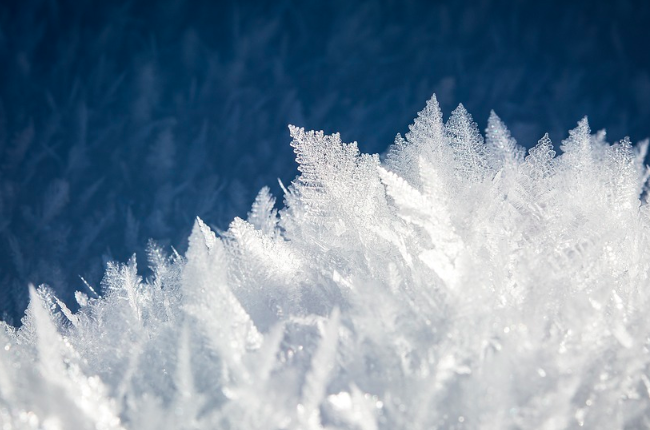
By forcing the blood to rush to your organs, you stimulate blood flow and work the entire vascular system.
Stimulation of blood flow is normally a good thing, especially when it’s in the context of contrast. By going between hot and cold, you force your blood to flow through your veins and heal your body.
Lots of people sit most of their day in chairs, and their blood flow is stunted.
This sedentary lifestyle is not great for your health, and it can make your body weaker and take longer to heal and recover from things like injury and exercise.
Benefits of cold baths
So to start with, the benefits of ice baths are not actually very well researched.
There have just not been enough studies that have been done on ice baths to show definite and defined benefits and results for this type of therapy.
There have been a couple of studies done but the number of people used for those studies was very low (under 20). That being said, there are lots of subjective reports of several very interesting benefits such as:
- Improved recovery time
- Decreased muscle soreness after workouts
- More energy and a general good feeling
- Increased willpower
- Your bathroom doesn’t steam up and cover the mirror
- You feel relaxed and deeply peaceful
Similar benefits to cold showers, right?
This could just be to do with the fact that cold water is generally uncomfortable (unless you like it, like me!).
There are conscious and subconscious benefits to doing something you find uncomfortable. It makes your willpower stronger, and it makes everything else you do in the day seem easier.
I can say for a fact that when I start my day with an icy cold shower or a bath, everything else feels easier.
I find that the other tasks I have to do for the day become easier because I’ve already done the difficult thing, which is to immerse myself in freezing cold water.
This is known in personal development circles as ‘eating your frog’.
It’s said that if you eat a frog first thing in the morning, there’s nothing else you could have to do in the day that would be harder than that, so the whole day goes by easier and you get more done.
I’m not suggesting you eat a frog, but a cold shower is probably much better for you and won’t make you vomit. Cold showers can also be done anywhere, and you save money because you’re not heating the water.

There’s not a whole lot of work I could do that is harder mentally than immersing your warm, comfortable, and relaxed body in freezing cold, icy water.
It certainly makes my willpower stronger for the rest of the day but again, this is just my subjective experience.
Don’t take it as law until you’ve tried this and seen how your body and mind reacts. It’s different for everyone, and actually some people find they feel more tired after they’ve had an ice shower. This is because everyones body responds differently to experiences like this.
It’s been said about the studies on ice baths that the benefits are mainly subjective and in the mind. In my opinion, though, that’s actually enough.
If there’s something I can do that’s as simple as jumping in a cold bath that will improve my mental willpower and performance, I’ll do that any day.
I think there are actually real benefits too, but there’s just not been much research done on these benefits, and this type of therapy. I think in the future there will be much more research done on this sort of thing.
30 days of ice baths: my experiences
So my experience of ice baths is as follows:
The first day was probably the hardest of course, as with any new challenge or habit you’re trying to build.
That being said, because I’ve been having ice showers every day pretty much for several years, this was nowhere near as bad as I imagine it would be for someone who’s never done that.
If you’re just starting out, I’d suggest starting with a short cold shower at the end of your normal shower and then working up to doing cold showers for longer and adding ice baths in as well.
Never just start from the beginning doing ice baths with lots of ice for long periods of time.
You’ll probably hurt yourself or feel terrible afterward anyway, and that’s not the goal here at all.
The goal is to feel better and more energized after doing this, and that will only happen when you work yourself up to doing this slowly over time.
It took me weeks and maybe even months to get used to cold water in the showers, let alone the baths. By the time I started having ice baths, I was already pretty much an ice man!
So the first day was a little difficult, but to clarify, I didn’t fill the bath with ice on the first day! I started just by having a cold bath.
This means filling the bathtub with only cold water. Depending on the time of year you do this, you’ll have a very different experience.
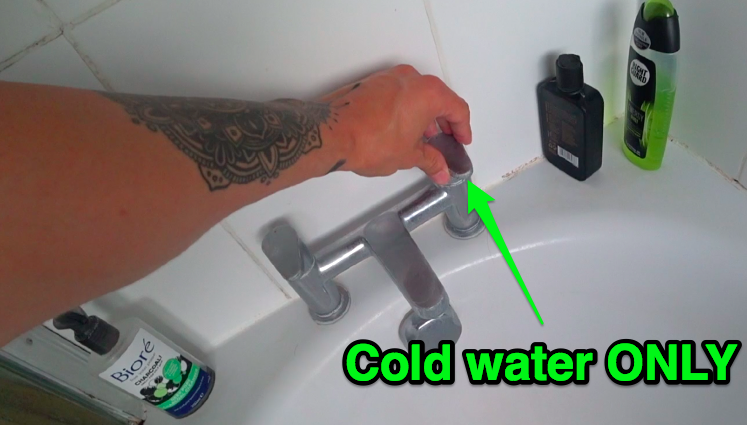
I did this in the summer, so the water wasn’t actually super cold anyway because it had been lying in hot pipes underground in the summer heat.
That being said, it was still very different from having a warm bath. It’s especially hard if you’re used to boiling hot baths with steam coming off the top, which most of us do.
So for the first bath, I just poured cold water in and set a timer on my phone for about 5 minutes.
Actually, I think I used a song for this that was about 5 minutes, so I could just focus on the song instead of wondering all the time how long was left of the timer.
This helped to distract me from the cold water. It’s different from a cold shower because you’re not supposed to move around.
At least with a shower, you’re moving around and getting the blood flowing more, so you sort of warm yourself up a bit more.
Baths immerse your body in cold water, and make sure you can’t warm up until you get out of the bath.
So it’s very different, hence why I suggest waiting until you’re used to cold water before trying this.
Because I don’t have a very big house, I don’t have a way of filling up a pool outside or using a chest freezer. But I hear that’s a good way of chilling a large volume of water for this.
So I actually just froze a tupperware of ice in the freezer and then put the ice block into the water while the bath was running. This made the water noticeably colder once it had all melted.
On the second day, like I said, I added the ice block. But because the water wasn’t actually that cold (it’s still summer, remember?) the ice melted pretty quickly, and I was left with water just a bit colder than the first day.
After a few seconds of getting used to this, it was fine, and I sank instantly into a deep state of relaxation.
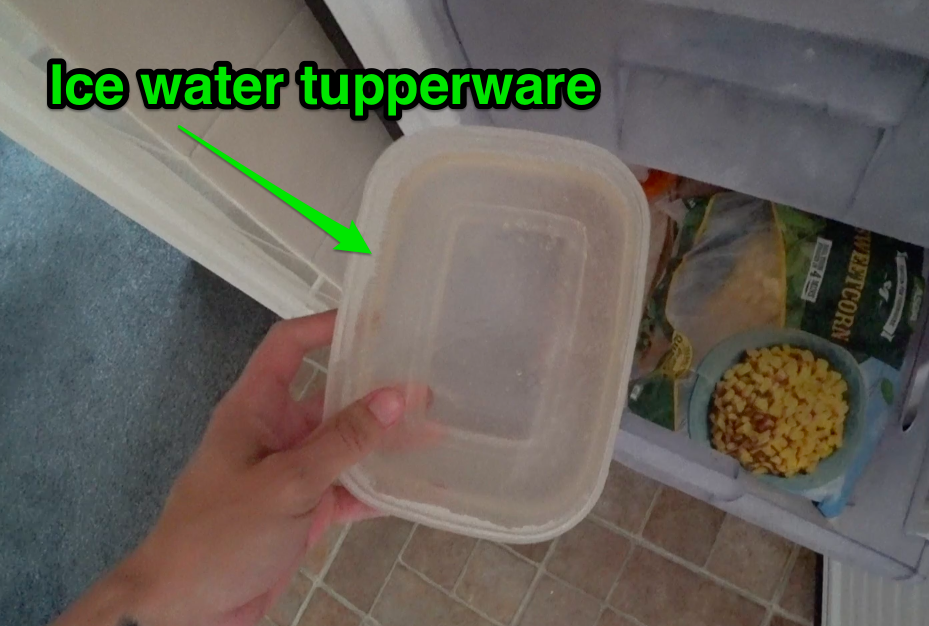
I find the best way of dealing with the cold, is to not resist it at all. Don’t try and warm yourself up. Allow the cold.
Don’t tense any muscles, don’t move around, and don’t start breathing rapidly.
Just focus on moving as slowly and as little as possible. This way, your body will take over and take care of you.
Your vascular system will activate, and your blood will go where it needs to. Trust me on this one. If you’re wondering what you should focus on or how to take your mind off the cold, don’t.
Just focus on the feeling and relax into it. Tell yourself that it’s going to be okay and that your body is designed to adapt to temperature changes like this.
Think back to when we were in the wild, and the only way we had a shower was to dip into frozen lakes or waterfalls.
Our bodies and vascular systems are designed to do this.
But we weaken them by constantly using heaters, wearing lots of clothes, and wrapping up for even the slightest cold breeze, meaning our vascular systems don’t need to work, so they don’t.
You’ll build up your ‘cold muscles’ very quickly, trust me. But don’t fight it, the GOAL is to make and KEEP your body cold for the duration of the bath.
Don’t try and comfort yourself by moving or thinking about something else. FEEL and embrace the cold.
So then, for the rest of the first week, I would add one entire Tupperware of ice each day.
Same rules: 5 minutes sitting in the bath, not moving at all, listening to music, and adding one extra ice block a day.
After a week of this, I felt very used to the ice and the cold, and I started to REALLY enjoy it.
I started to become very good at just instantly adapting to the cold. I could enter the water without that shock that lasted for a minute before.
Now my skin touches the cold water and instantly adapts, and the blood knows where to go.
This really surprised me, because I thought it was going to be difficult forever.
In fact this is how we often feel when we learn a new skill, We get the feeling when it’s difficult at the start that it will be that way forever.
But it almost never is. Humans are capable of adapting to things. We’ve been doing it forever, and we’re very good at it.
After the first week or so, I ran out of space in my freezer, and by that point (I think by about a week and a half), I was using lots of Tupperware.
I ended up adding extras because it wasn’t feeling as cold and I was worried I’d got used to it too quickly.
So I started putting about 10 big Tupperware and one big salad bowl full of ice in each bath.
Same rules, 5 minutes, only cold water to mix the ice with and not moving at all. I was submersing my entire body up to my throat the whole time.
And so after a week and a half, the only thing left to level up was the DURATION of time I spent in the bath.
I started increasing the time to 10 minutes. It was so easy at this point and I found the longer I stayed in the bath the better it felt.
I had adapted to the cold.
There was ONE particular day however near the start (about day 4, I believe) that I was shivering during the first few seconds of the bath.
I’m not sure why this happened, but it was the only time this happened. The rest of the time I didn’t shiver once, and I never felt cold when IN the bath, or afterwards.
And from then on it was a cakewalk.
I’d add the ice (which at this point was taking up more than half of my big freezer) and it would melt into the water and chill the water.
I estimate the water temperature was about 2-3 degrees. It can’t have been much warmer than that.
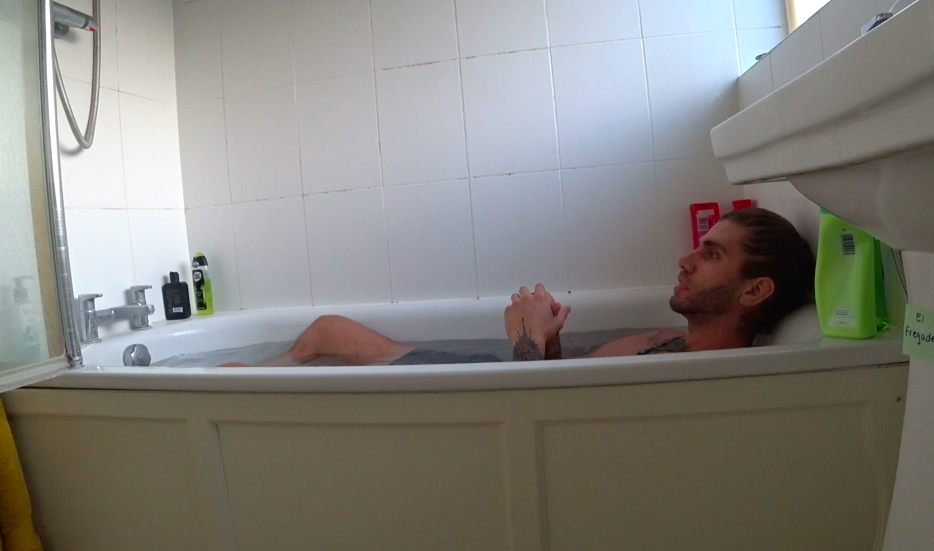
I should mention I was exercising most days, doing either yoga or strength training, and every day I would practice my handstand pushups.
Normally, doing this would leave me sore, but I noticed I never really felt sore at all. I’m not sure if this was because of the ice baths or something else, but it certainly happened.
The problem with things like this is that it’s hard to say what caused the effects, for sure.
I mean, it could be that I wasn’t pushing myself as hard as I normally do.
It could be the ice water helping me recover faster; it could be the type of exercise, time of year, amount of sleep or food I was getting, and so many other things.
But I did notice that I felt BETTER after the ice bath than before. And that effect never went away.
I’d always feel better after doing it than before. And for me, that’s enough to make this a long-term habit.
With many things, they feel good while we’re doing them, but you feel bad after, for example:
- Smoking
- Eating junk food
- Binge-watching TV
- But with other habits I’ve found, they feel good while you’re doing them AND afterward, for a long time. Things like:
- Meditation
- Going for a walk
- Listening to motivational speeches
- I am working hard on a goal I have
So the ice baths became a part of my routine. In fact sometimes, if I’m busy, I’ll just take a cold shower because the effects are very similar.
But if I need to relax and take my mind off things, I find another effect of ice baths is that I feel deeply connected with myself, and nothing else matters.
I found ice baths REALLY good for taking my mind off things like stress.
On one of the days I was stressed about a personal issue, and going into the ice bath instantly made the problem fade away.
It had the same sort of effect as working out with loud music when you’re angry—a way of getting the energy out.
Which was weird because the ice bath wasn’t really releasing energy. It was just lying there, but it worked the same way.
How to take an ice bath
So to start with, please be careful. Lowering your body temperature with cold water and ice CAN be dangerous if you do it wrong, or too much too soon. Most of us haven’t done this before, so take it slow.
Always have someone in the house aware of what you’re doing, just in case you start feeling strange, faint, or whatever else.
That being said, you’ll most likely be fine, but it’s always good to be safe.
So here are the steps to taking ice baths. Let’s go!
1: Start with cold showers
Never start with ice baths right off the bat.
Showers are the best way to get used to the cold because you can quickly revert back to warm water if it gets too uncomfortable.
It’s also easier to deal with the cold when you’re standing up because your blood flows better and more easily.
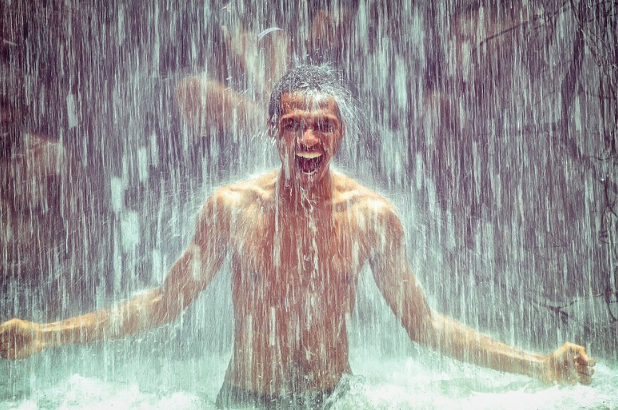
So start by adding a cold shower to the end of your ‘normal’ warm shower.
This will help seal your pores and help your body retain water and moisture and it’s a good way of getting started.
It’s also really good for your hair by the way, as it locks in moisture.
2: Then lengthen the showers
Once you’ve got used to adding a cold shower to the end of your normal shower, try having the ENTIRE shower cold. Then once you’ve done that, focus on staying in the shower longer.
A way I found was easy to do this was to have a warm bath, and then at the end I would turn on the cold shower, and stay in until the warm bath water had completely drained out of the bath.
I found that this took about 6 minutes or so.
As you get better, you can stay in the shower water for longer, and it will become easier and easier.
Trust me when I say it gets easier. In fact, you’ll feel that it’s getting easier, even after the first and second times you’re doing it.
3: Now try a cold bath (no ice)
Here’s where things get interesting. After practicing taking cold showers for a few days (every day), try a cold bath.
Most of us have never had a bath in which we only used the cold water tap, right?
So this will be a very different experience for most of us, but stick with it. Don’t be scared, and constantly tell yourself that it’s good for you and you’ll be okay.
For the first few seconds (or minutes), you’ll probably feel very uncomfortable and like you want to get out.
This is much worse if you try to move around and warm yourself up in the water.
You won’t be able to, and you’ll panic and maybe start shivering. Once you start shivering, your bath is pretty much over. So focus on staying as still and relaxed as possible.
Tell yourself that if you stay really still and calm, the cold water can’t affect you and you won’t feel cold. This is the easiest way of avoiding getting too cold and panicking.
4: Focus on relaxing your muscles
Relaxing your muscles is a very important part of the cold bath routine. By relaxing your muscles, you stop the body from holding blood on the surface of your body, near the cold water.
This is essential for letting your body do what it does best.
If you tense your muscles, you’re forcing the blood to stay in the muscles and near the surface, making you stay cold!
By relaxing, you let the blood flow away from your skin and the cold water, and in towards your internal organs, helping you retain warmth in your core.
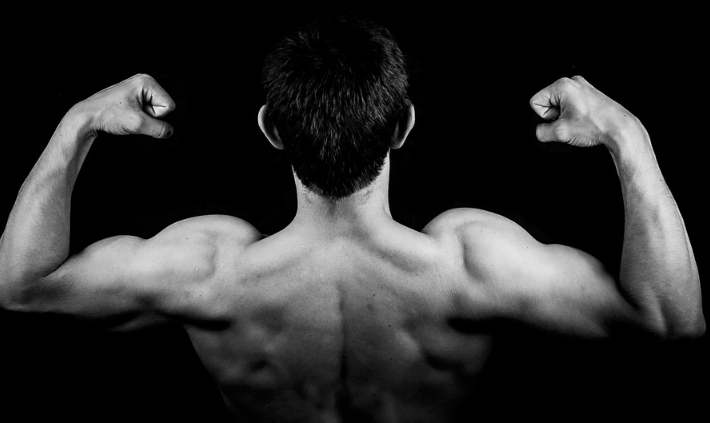
This will make a lot of sense if you get in the bath and try it. Focus only on making sure you don’t move and don’t tense any muscles.
5: Add ice
Now we’re going to add some ice. Fun!
I’d suggest starting with a small block like a Tupperware or an ice cube tray. Something like this is just to get you used to the idea of adding actual, real ice to your bath.
Please don’t start by putting a huge bag of store-bought ice into your bath.
It would be super embarrassing to explain to your friends or whoever you live with that you fainted because you took a bath.
Small amounts of ice are better here, just enough to lower the temperature of the water a little bit.
Then, as you’ve gotten used to it, you can add more, like a couple of blocks and more.
Add more each day, and never take the ice away. Once you’ve been doing ice baths with, say, two blocks of ice, never reduce the amount of ice.
The key is progressive increases to the amount of ice and the length of time your’e spending in the water.
6: Add MORE ice
So now start adding more ice. I’d suggest adding an extra block or so every day. This way, you should reach a large amount of ice in about a month or so.
In fact, even after a couple of weeks, you’ll be bathing in lots of ice, and your body will start really adapting at a rapid rate.
If you feel pain at any point, get out of the bath. Don’t reduce the ice for next time, just get out and try again in a few hours or the next day. This way you’re better able to adapt as time goes on and your body will get the message.
7: Spend longer in the ice water
So once you’ve reached the maximum amount of ice you can add to the bath (most people’s freezers aren’t that big), you should focus on spending longer in the water.
This is the only way to maintain the progressive overload in your body.
Try adding one minute every day once you’ve got the maximum amount of ice you can produce in the bath.
You can set a timer on your phone and try to stay in the water for the entire length of time. If at any point you start uncontrollably shivering, get out and try again with the same amount of ice and time tomorrow.
If you’ve been doing it right and slowly adding ice and time over the course of days, you shouldn’t ever struggle and it will never get to the point where you’re shivering and finding it uncomfortable.
8: You’ve adapted!
Now that you’ve been doing that for a few weeks, you’ll have adapted to the cold. It’s amazing to see how capable the human body is of adapting to all sorts of things. In the wild, we’d be doing this sort of thing all the time.
It extends to things like fasting and getting stronger, things we’d have been doing in the wild before the comforts of modern civilisation made us all SOFT.
If you really want to see what the body can do, try looking at something like intermittent fasting, something I’ve been doing for a while.
It’s enabled me to improve my digestion, sleep, and strength, and I feel better while doing it. There are lots of benefits to fasting in this way, but that’s for another post.
9: REAL ice baths (difficult)
Now once you’ve adapted to the cold ice baths, you might want to try REAL ice baths. This is where the ice covers the entire surface of the water, and it’s cold enough that the ice DOESN’T melt.
This, I warn you, can be tough.
It’s a different ball game, but if you’re slowly adding more and more ice as the days go on, there will never be a sudden change or shock, so you’ll be able to adapt to it.
The key to this is slow and small increments in how much ice you’re using and how long you’re staying in the water.
Are ice baths dangerous?
Ice baths can be dangerous. They lower your blood pressure, heart rate, and blood flow.
This means if you have any blood or heart-related conditions, or a pacemaker, etc., you shouldn’t do ice baths. Or if you do, you should consult your doctor first and ask them what they think.
There’s also the risk of going into shock if you go into too cold water too quickly.
This happens when the body isn’t used to the cold. This will happen if you’re super excited about ice baths, you’ve seen a video or two, and you’ve gone out and bought bags of ice for your first ice bath.
Take it slow, build up your cold resistance over time. Remember, your entire life you’ve probably NOT been practicing or strengthening your vascular system and cold resistance. So don’t jump in the deep end.
Ice baths for recovery
It’s been said that having ice baths is really good for recovery from exercise. I haven’t seen a study showing this in detail, but everyone I’ve asked who’s tried ice baths will attest that they work.
I can vouch for them, but of course, don’t take my opinion on this stuff. Try it yourself and see how you feel. I always suggest you see how it feels for you and go from there.
